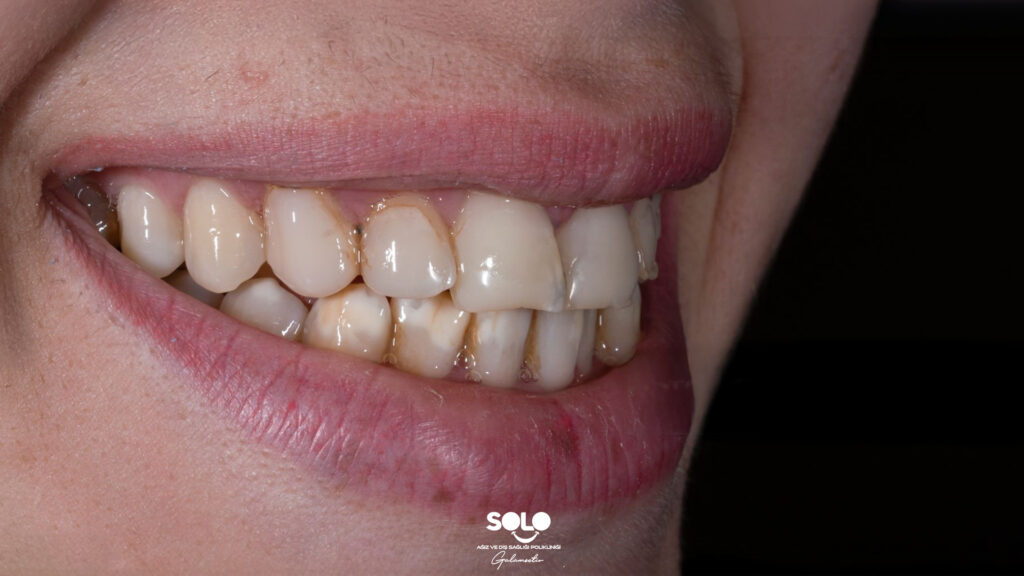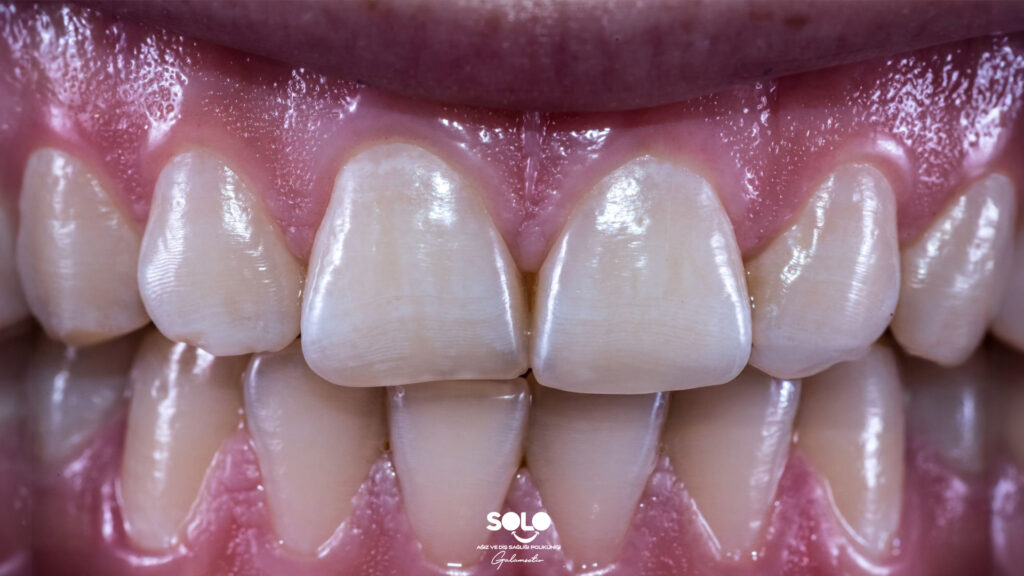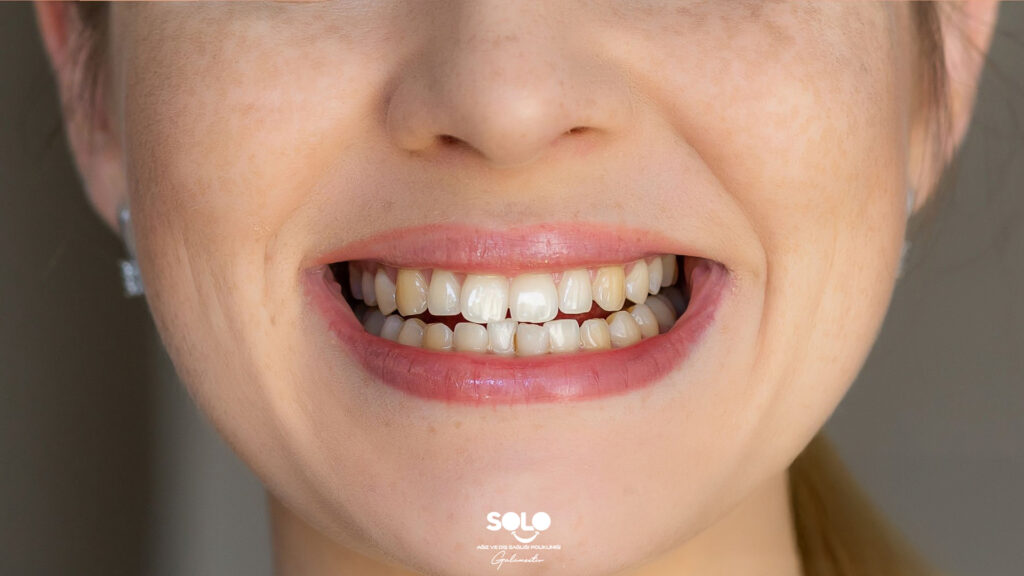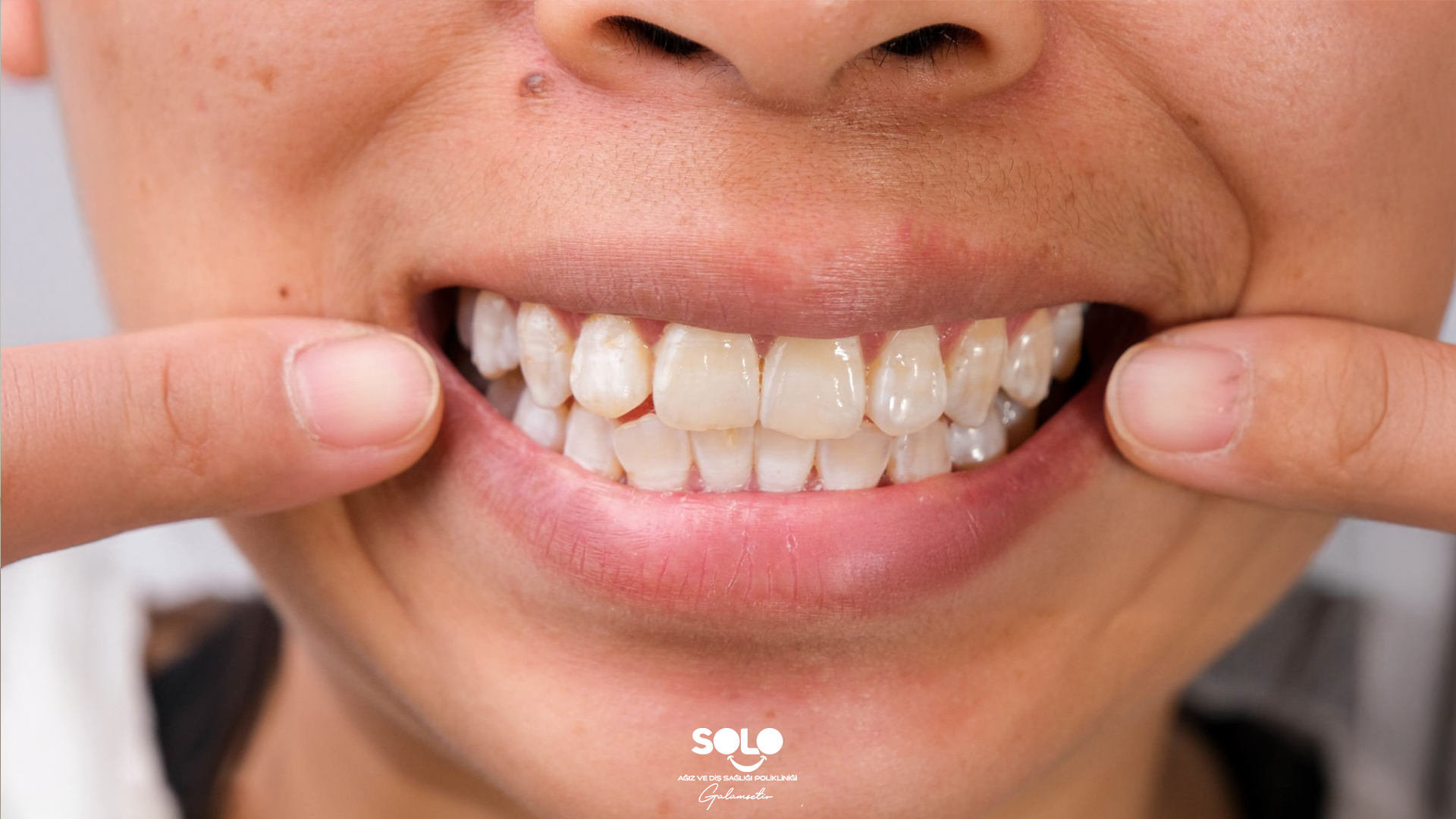What Causes White Spots on Teeth?
A smile often speaks volumes about more than just words. Considering that our first contact with others often begins with a smile, the appearance of our teeth becomes quite important. Bright, clean, and healthy teeth are not only aesthetically pleasing but also a reflection of our self-confidence and overall health. However, sometimes, no matter how carefully we care, we can notice some undesirable changes in our teeth. White spots, in particular, appearing on the surface of our teeth, can be both visually disturbing and cause many people to wonder, “Is there something wrong?”
While these spots often seem insignificant, the underlying causes can be quite diverse. The causes can range from mineral loss in tooth enamel to excess fluoride, from childhood illnesses to poor oral hygiene. Furthermore, these white spots are not only aesthetically pleasing but can also be a sign of cavities. In other words, they can be considered a warning sign.
What Are White Spots on Teeth?
White spots on teeth are discolorations that often cause aesthetic concerns when noticed, creating a chalky, dull appearance on the tooth surface. These spots, which usually appear on the enamel, stand out against healthy tooth tissue and can affect a person’s smile, especially when found on the front teeth.
While they may seem innocent, these white spots aren’t always just a cosmetic concern. In some cases, they can be an early sign of tooth decay or mineral loss in the enamel. In other words, these spots can be thought of as small warning signals our body sends regarding our oral health. Early diagnosis can easily prevent more serious problems in the future.

While for some individuals, these stains may disappear on their own over time, in others, professional intervention may be necessary. Fortunately, today, there are many effective methods available to both identify the cause of these white spots and improve their appearance.
It’s important to remember that encountering these stains doesn’t necessarily indicate poor personal hygiene. Genetic factors, childhood antibiotics, high fluoride exposure, and even certain illnesses during tooth development can also contribute to this condition.
What Causes White Spots on Teeth?
Fluorosis (Excessive Fluoride Consumption)
Fluoride is an essential mineral for our dental health. It’s particularly known for its protective effect on tooth enamel. However, as with anything, too much fluoride can be harmful. Excessive fluoride intake during childhood and development can prevent healthy tooth enamel formation. This condition is called dental fluorosis.
Demineralization (Mineral Deficiency)
The gradual loss of minerals in tooth enamel is one of the most common causes of white spots. The acidic environment in the mouth contributes to this loss, especially in individuals with poor oral hygiene. Failure to brush or clean teeth adequately leads to weakened enamel over time.
Poor Eating Habits
Acidic drinks, sugary foods, and processed foods… Frequent and uncontrolled consumption of these damages tooth enamel and, over time, leads to white spots. Similarly, inadequate nutrition negatively impacts dental health. Vitamin C deficiency, in particular, can lead to deterioration of gum and tooth structure.
Enamel Hypoplasia (Enamel Developmental Disorder)
Enamel hypoplasia is a condition that occurs when tooth enamel fails to fully develop. It can be present at birth, but childhood illnesses with high fevers, excessive antibiotic use, or nutritional deficiencies can also trigger this problem.
Stomach Acid and Reflux Problems
Frequent stomach acid problems and reflux can affect not only the digestive system but also the teeth. The stomach acid reaching the mouth erodes tooth enamel over time, leading to discoloration and the formation of white spots on the tooth surface.
Unconscious Teeth Whitening Practices
Having bright, white teeth is certainly everyone’s dream. However, unintentional at-home whitening practices used to achieve this goal can damage tooth enamel. Uncontrolled use of products containing excessive hydrogen peroxide can cause microdamage and discoloration on the tooth surface.

Are White Spots on Teeth Always Dangerous?
White spots on the surface of your teeth don’t always indicate a cavity, but they’re not entirely innocent either. White spots on your teeth can be external signals of something amiss. For example, if the cause is a structural disorder like fluorosis, they generally don’t pose a serious health threat and are considered more of an aesthetic concern. However, if mineral loss, or demineralization, is involved, the situation should be taken more seriously.
This is because such stains have the potential to develop into cavities over time. Therefore, if you notice white spots on your teeth, consulting a dentist without neglecting them is the best course of action. Early intervention can both prevent larger problems and easily manage any aesthetically undesirable conditions.
How to Get Rid of White Spots on Teeth?
The treatment method for white spots on teeth varies depending on the cause and depth of the stain. In the early stages, white spots that develop due to mineral loss can be strengthened by fluoride supplements, special remineralizing toothpastes, or calcium-phosphate-containing products. For more significant stains, microabrasion removes a very thin layer from the tooth surface to reduce the appearance of the stains.
Furthermore, for white spots, which are frequently seen after orthodontic treatment (braces), “resin infiltration,” also known as Icon treatment, is a highly effective method. This technique involves applying a special liquid resin to the affected area to achieve a color-matched appearance. If the stains are deeper and more pronounced, tooth-colored composite fillings can achieve aesthetically pleasing results.
In more advanced cases, porcelain veneers (leaf porcelain) can be applied to the front teeth to achieve a permanent and natural appearance. The dentist will determine which method to use based on the stain’s severity.

How to Prevent White Spots on Teeth?
As with any health problem, preventing white spots on teeth in the first place is much easier and more effective than treating them. The first step in protecting yourself from white spots is establishing regular and correct tooth brushing habits. This habit should be instilled with parental supervision, especially during childhood, and children should be closely monitored for when and how they brush their teeth. When choosing toothpaste, consider the fluoride content. While fluoride is important for dental health, excessive consumption can damage tooth enamel.
Therefore, age-appropriate and balanced fluoride products should be preferred. Frequent consumption of sugary and acidic foods and beverages weakens tooth enamel; sodas, ready-made snacks, and junk food can create an acidic environment in the mouth over time, leading to mineral loss. Limiting these foods plays a crucial role in maintaining dental health.
Regular dental checkups shouldn’t be neglected; routine checkups every six months can help identify potential problems early and take preventative measures. During orthodontic treatment, cleanliness is even more crucial; plaque buildup around brackets creates an ideal environment for white spots to form.

